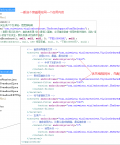python进程间共享数据的方式有:socket、文件/数据库、内存。内存方式即python中封装的特定功能的类。
python的进程也有同线程一样的Lock,避免操作同一对象时发生脏读。
这里演示Manager、Queue、Pipe三种方式。
1.Manager共享
1】自定义一个进程myprocess.py :
|
1 2 3 4 5 6 7 8 9 10 11 12 13 14 15 16 17 18 |
import multiprocessing import time class MyProcess(multiprocessing.Process): def __init__(self, name, listor, mngList): super().__init__() self.name = name self.listor = listor self.mngList = mngList def run(self): self.show() def show(self): while True: print("进程1 -%s, 默认列表:%s,\tMng列表:%s,%s" % (self.pid, len(self.listor), len(self.mngList), self.name)) time.sleep(2) |
2】程序代码:
|
1 2 3 4 5 6 7 8 9 10 11 12 13 14 15 16 17 18 19 20 21 22 23 24 25 26 27 28 29 30 31 32 33 34 35 36 37 38 39 40 41 42 43 44 45 |
import multiprocessing import os import time from myprocess import MyProcess # 进程间默认不共享全局变量 globalList = [] # 使用Manager定义 可在进程间共享的全局变量 managerList = multiprocessing.Manager().list() # 写操作进程 def process2(): while True: print("进程2 -%s,默认列表:%s,\tMng列表:%s" % (os.getpid(), len(globalList), len(managerList))) # globalList递增1 globalList.append(1) # 操作全局变量 managerList.append(1) # 操作全局变量 time.sleep(0.5) # 读操作进程 def process3(): while True: print("进程3 -%s,默认列表:%s,\tMng列表:%s" % (os.getpid(), len(globalList), len(managerList))) # globalList不变,一直是0 time.sleep(0.5) # 主进程 def main(): MyProcess("MyProcess", globalList, managerList).start() p1 = multiprocessing.Process(target=process2) # 定义一个进程 p2 = multiprocessing.Process(target=process3) p1.start() # 启动进程 p2.start() if "__main__" == __name__: # 默认主进程 print("主进程启动") main() # 创建子进程 while True: print("主程0 -%s,默认列表:%s,\tMng列表:%s" % (os.getpid(), len(globalList), len(managerList))) time.sleep(0.5) |
2.Queue共享
|
1 2 3 4 5 6 7 8 9 10 11 12 13 14 15 16 17 18 19 20 21 22 23 24 25 26 27 28 29 30 31 32 33 34 35 36 37 38 39 40 41 42 43 44 45 46 47 48 49 |
import multiprocessing import time # 队列。先进先出 queuer = multiprocessing.Queue(maxsize=5) # 元素数量上限。最大长度5 # queue.put(item, block=True, timeout=None)方法参数: # item,放入队列中的数据元素。 # block,当队列中元素个数达到上限(queuer.full()返回true),继续往里放数据时: # 如果 block=False,直接引发queue.Full异常;效果同put_nowait(item)方法。 # 如果 block=True-默认,timeout=None,则一直等待,直到出现空位放入数据; # 如果 block=True,timeout=N(正整数),则等待N秒。N秒后没出现空位则引发queue.Full异常。 # timeout,设置超时时间。默认None。 # queue.get(block=True, timeout=None)方法参数: # block,当队列中没有数据元素(queuer.empty()返回true),继续取数据时: # 如果 block=False,直接引发queue.Empty异常; # 如果 block=True-默认,timeout=None,则一直等待出现数据可以取出; # 如果 block=True,timeout=N(正整数),则等待N秒,N秒后没有数据可供取出则引发queue.Empty异常。 # timeout,设置超时时间。默认None def processPut(): queuer.put(666) while True: queuer.put("A") time.sleep(2) # 延迟2秒 # print("添加:%s" % queuer.qsize()) # Raises NotImplementedError on Mac OSX because of broken sem_getvalue() print("添加了") def processGet(): element = queuer.get() print(element) while True: ele = queuer.get() # 如果已经空了,则阻塞等待出现可用数据 time.sleep(0.2) print("取出了:%s" % ele) def main(): putor = multiprocessing.Process(target=processPut) getor = multiprocessing.Process(target=processGet) putor.start() getor.start() if "__main__" == __name__: main() |
3.Pipe共享
|
1 2 3 4 5 6 7 8 9 10 11 12 13 14 15 16 17 18 19 20 21 22 23 24 25 26 27 28 29 30 31 32 |
import multiprocessing import time # 管道。进出随意但有方向 piper = multiprocessing.Pipe(True) # True:双工-同时收发。Fase:左收右发,两个口是元组 [0]接收recv,[1]发送send def processPut(): for i in ["a", "b", "c", "d"]: piper[1].send(i) print("添加了 ", i) time.sleep(2) def processGet(): while True: ele = piper[0].recv() # 如果已经空了,则阻塞等待出现可用数据 print("取出了:", ele) # time.sleep(3) def main(): putor = multiprocessing.Process(target=processPut) getor = multiprocessing.Process(target=processGet) putor.start() getor.start() putor.join() # 执行send时阻塞管道,使recv方法等待执行 getor.terminate() # 循环send完毕,管道释放。recv取不到数据时,自动结束 if "__main__" == __name__: main() |
-end
声明
本文由崔维友 威格灵 cuiweiyou vigiles cuiweiyou 原创,转载请注明出处:http://www.gaohaiyan.com/2661.html
承接App定制、企业web站点、办公系统软件 设计开发,外包项目,毕设



